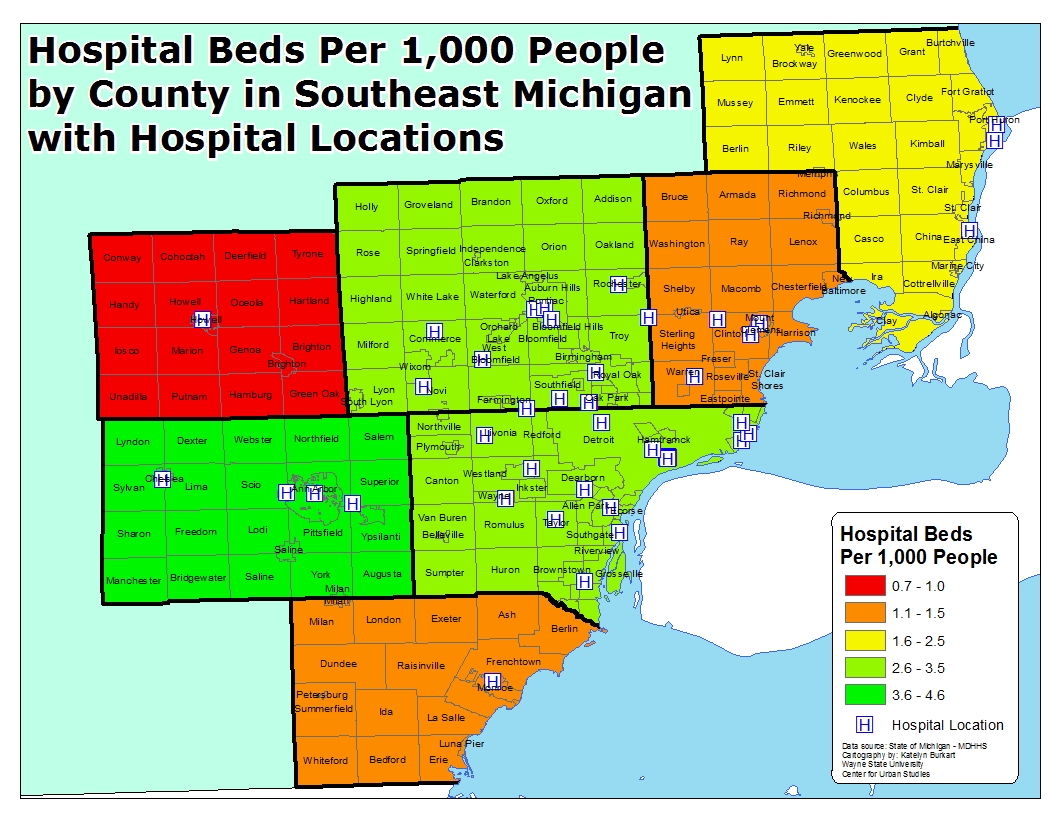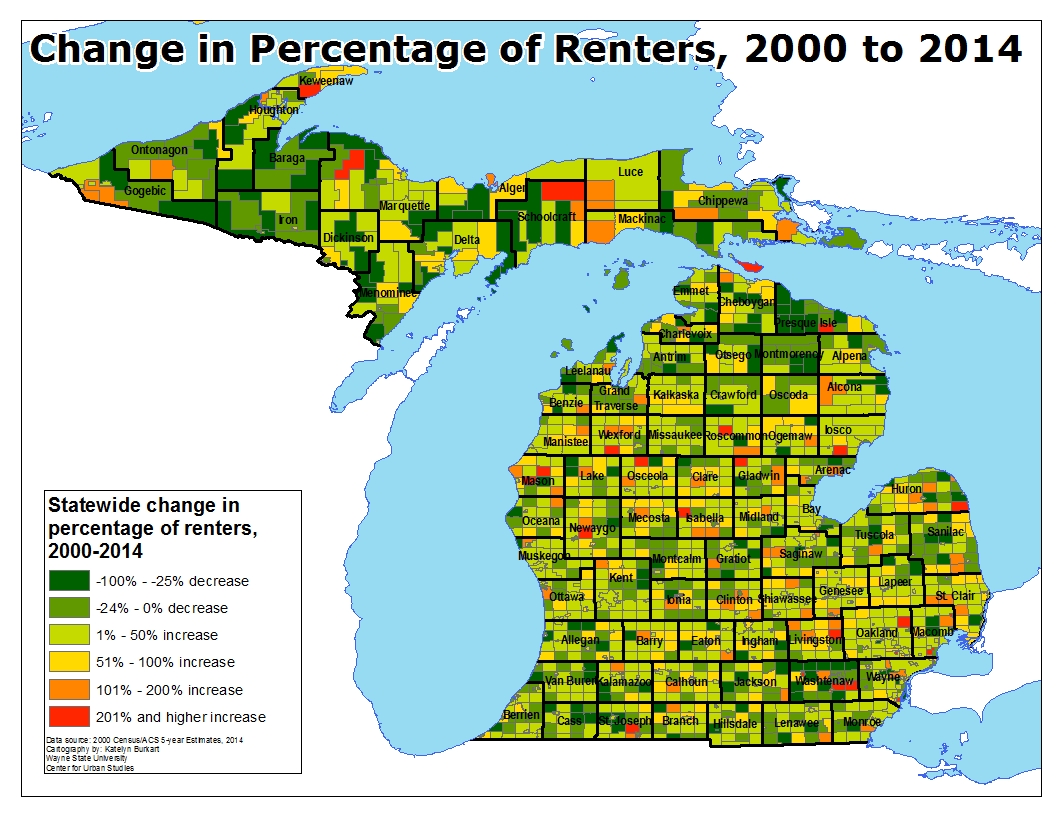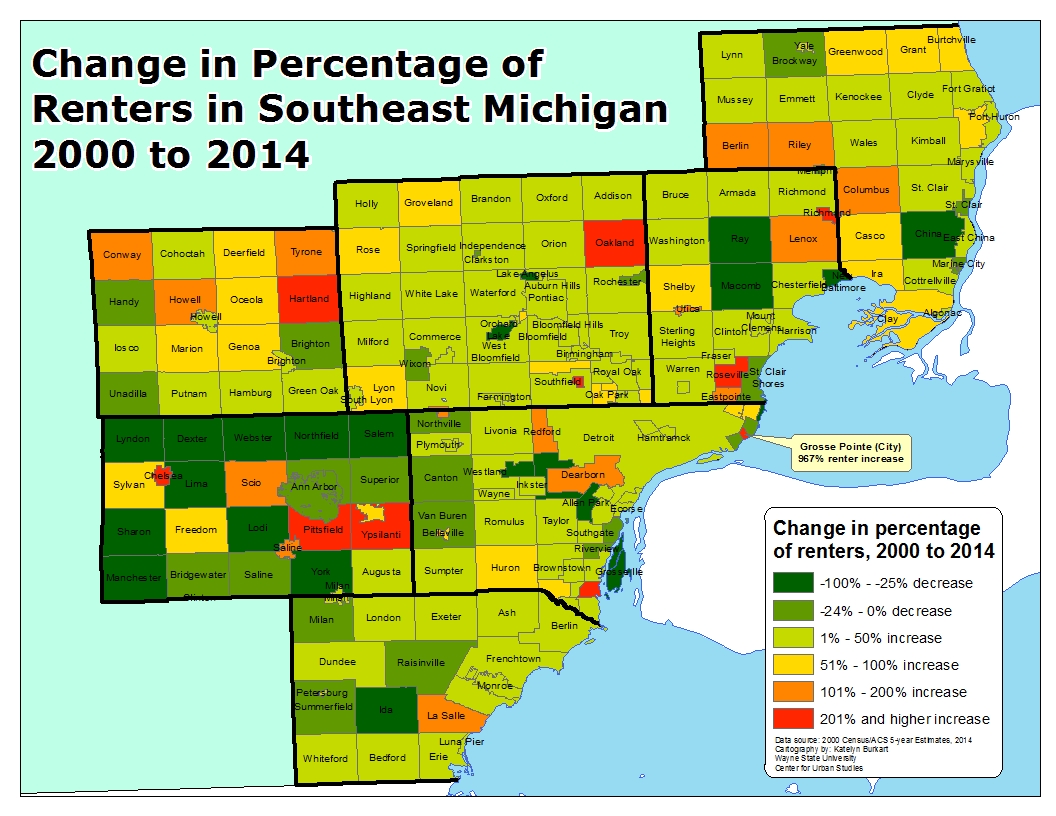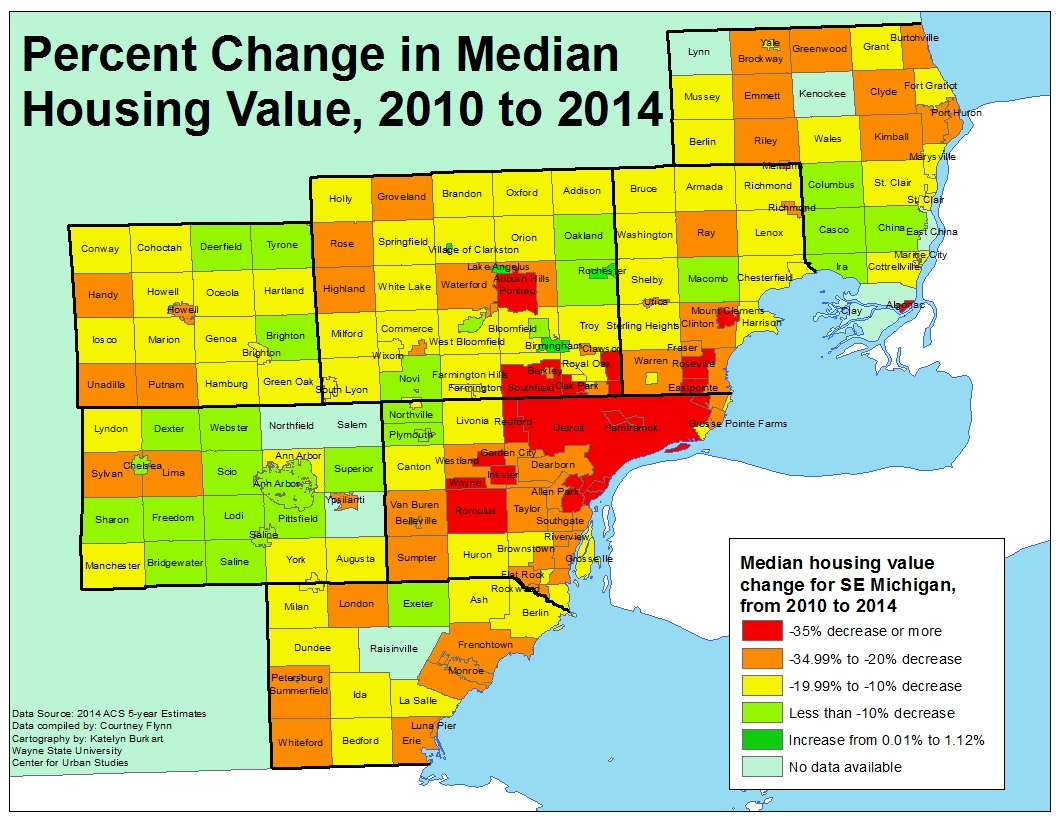Access to healthcare is necessary for disease prevention, a longer life expectancy and an overall increased quality of life. Both regionally, and nationally, those living in rural areas have far less accessibility to hospitals. Under the Medicare Rural Hospital Flexibility Program created by Congress in 1997 Critical Access Hospitals were created to strengthen health care access in rural areas. There are 36 Critical Access Hospitals in the state of Michigan, none of which are located in Southeastern Michigan. Critical Access Hospitals must be located in a rural area and be more than 35 miles from another hospital. Hospital bed access throughout Southeastern Michigan is concentrated in more heavily populated areas, leaving dozens of rural communities with limited access. The city of Ann Arbor has the highest overall hospital bed per capita (per 1,000 people) access, largely due to the University of Michigan Health System being located there.
All data for this post was provided by the Michigan Department of Health and Human Services. According to the department, the number of registered hospital beds can remain registered to a hospital even if it is closed. This is particularly true if the beds from the closed hospital are being transferred to a new hospital. This is the case for DMC Surgery Hospital in Oakland County; this hospital is closed but 25 of its beds are being transferred to the Children’s Hospital of Michigan (also located in Oakland County). The remaining 11 beds will be delicensed.
In total, the University of Michigan Health System had 1,000 licensed beds in 2016, according to the Michigan Department of Health and Human Services. Regionally, this hospital has the second highest hospital bed count next to Beaumont Health Systems’ Royal Oak location, which has 1,040 licensed beds. Aside from the University of Michigan Health System located in Ann Arbor, there is also St. Joseph Mercy in Ann Arbor with 513 registered beds. Outside of Ann Arbor in Washtenaw County there were two other hospital facilities.
Despite Washtenaw County having the highest hospital bed access per capita in the region, Wayne County had the highest number of hospitals, 12 of which were located in the city of Detroit. In Wayne County, Henry Ford Hospital in Detroit had the most number of licensed beds at 877.
While hospital bed access is prevalent in the more densely populated areas, such as Ann Arbor, Detroit, and the tri-county metro region, it lacks in the rural areas. For example, in Monroe County there is only one hospital-Promedica Monroe Regional Hospital-with 217 registered beds. Per capita hospital bed access in Monroe County is 1.5 per 1,000 people, which is actually higher than Macomb County’s Per capita hospital bed rate (1.4 per 1,000 people). This difference though is not because of the total number of licensed beds in each county (there are 1236 in Macomb County) but the differing population numbers.
In Livingston County there was only one hospital-St. Joseph Mercy Livingston Hospital-with 136 licensed beds. This put the hospital bed access rate per 1,000 people for the county at .7, the lowest in the region, furthering highlighting the lack of hospital bed access in rural areas. Much of northern Macomb County and St. Clair County also had such lack of access.









